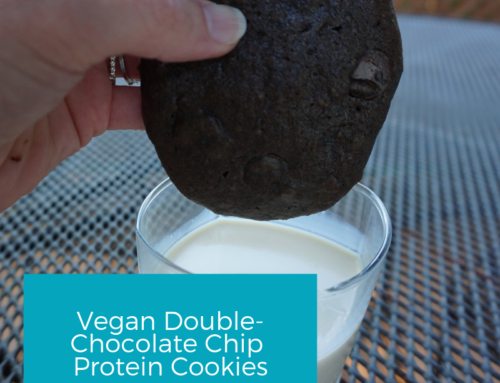We know that a regular exercise routine promotes health and reduces risk of chronic diseases. This concept is not new and dates as far back as 2500 BC in ancient China, where they found records of organized exercise (Lyons). In Ancient Greece, the philosopher Plato said, “Lack of activity destroys the good condition of every human being, while movement and methodical physical activity saves and preserves it” (Fox and Haskell). Research studies started to demonstrate that higher amounts of physical activity reduce the onset of coronary heart disease in the early 1950s (Morris et al). And from there numerous studies have continued to demonstrate the positive relationship between exercise and a healthy body.
There is so much research about the benefits of exercise on the different organs of the body that we could continue to discuss them but this article will focus on the fuel sources that muscles need to maintain exercise levels. Having a basic understanding of what fuel sources muscles prefer can help you create a more effective plan.
Fuel for the Muscles During Exercise
During exercise, muscles must burn available fuel to maintain muscle contractions. Muscles can burn glucose (from carbohydrates) and fatty acids (from fat) and use amino acids (from protein) to build muscle. There are three energy systems that the body uses to breakdown food into energy. Just in case you want to know what they are called, the three energy systems include: the phosphagen system, the glycolytic energy system, and mitochondrial respiration. On a simple level, the goal of these systems is to create adenosine tri-phosphate (ATP), a molecule with high-energy bonds and breaking the bonds releases the energy to power muscle contraction. ATP gets stored in every cell of the body and gets used for many normal processes but exercise requires a particularly high amount of ATP. The type of fuel and system that is utilized depends on the intensity and duration of exercise that is being performed.
The body has figured out how to store fuel so it has it readily available to use for energy. Glucose gets stored within each muscle cell and in the liver as glycogen and gets used during high-intensity workouts. Fatty acids get stored within the muscle cells as triglycerides and are used as fuel during low-intensity workouts. Amino acids do not get stored as amino acids but instead are used to build the muscle fibers.
As the intensity and duration of exercise increases, the usage of carbohydrates goes up and dependence of fatty acids goes down. Higher intensity exercise means your body is using your glucose storage to fuel your workout. Since the body doesn’t store amino acids, your body does not prefer to use amino acids as a type of fuel. Instead, the body uses glucose and fatty acids so the body can use amino acids to build and preserve muscle. The chart below demonstrates the crossover in fuel sources that occurs in the body during exercise.

Building Muscle Through Exercise
One of the ways our muscles gets stronger is through what’s known as the microtrauma muscle growth theory. This theory suggests that through exercise, microscopic tears occurs to the muscle fibers and through the activation of the muscle repair process, muscles rebuild and get stronger. Since muscles needs amino acids to build muscles, microtrauma requires amino acids and rest immediately following a period of exercise. That’s why you’ve heard it’s important to consume protein after exercise.
Fatigue During Exercise
As you can see from the chart above, depending on the intensity and duration of your exercise session, your glycogen and triglyceride fuel storages can become highly depleted. The feelings of exhaustion are a result of depleted fuel storages, muscle microtrauma, and accumulation of waste products that buildup because of metabolic processes. I like the image below that helps summarizes the reasons that you experience exhaustion from exercise.

Image sourced from West Publishing Company
What’s Important
Muscles are the largest type of tissue in the body and it’s important to fuel them properly. All three macronutrients, fats, carbohydrates, and proteins play an important role in exercise fuel sources. Fueling your body properly helps your muscles use the right fuel in the right metabolic process, maintains and preserves your muscles, and allows your muscles to maintain contractions. In future articles, I will continue to demonstrate the need for all three macronutrients and explain what happens when you remove one of the macronutrients. Until then, keep fueling and moving your muscles.
Resources:
Exercise Physiology: Theory and Application to Fitness and Performance. by Scott Powers, Edward Howley. (2011)
Fox SM 3rd, Haskell WL (1968). Physical activity and the prevention of coronary heart disease. Bull N Y Acad Med 44: 950–967.
Lyons AS, RJja P (1978). Medicine: An Illustrated History. H. N. Abrams: New York.
Morris JN, Heady JA, Raffle PA, Roberts CG, Parks JW (1953b). Coronary heart-disease and physical activity of work. Lancet 265: 1053–1057.






Exercise is one of my favorite things ever. Sure, it doesn’t feel THE BEST when doing it, but the after effects are amazing. I love building muscle and looking strong, it radiates confidence! It’s interesting to truly read what’s going in under your skin when you work out – so I appreciate the details! 🙂
Wow that’s so interesting! I LOVE learning about nutrition and the food the fuels my body! 🙂
Great information and another reminder of how important good nutrition is for fitness. Thank you for sharing.
Awesome post. You made the complex easy to understand for the general public, and you really hit the nail on the target with this one. <3
Always find these kinds of charts really interesting thanks for sharing!
Great info. I really have to get better with my protein since I’m lifting more.